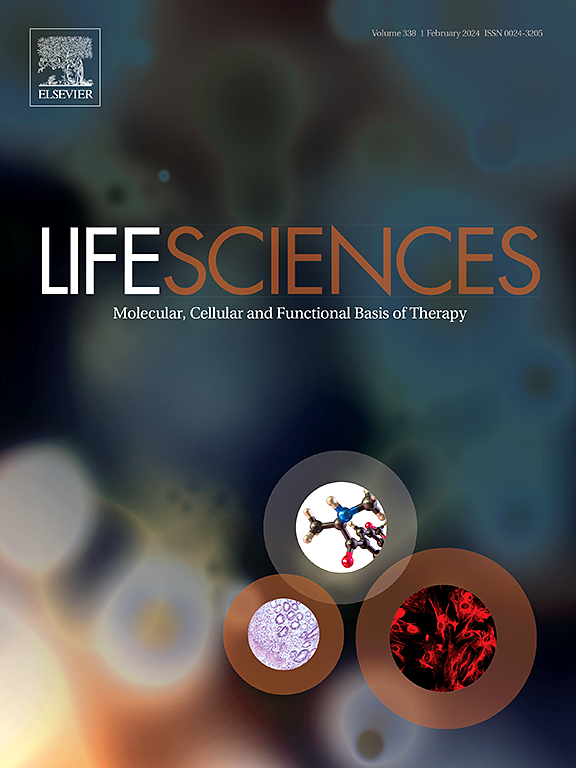Tempol 可减轻镉诱导的大鼠腮腺损伤的炎症、氧化应激和组织病理学改变。
IF 5.2
2区 医学
Q1 MEDICINE, RESEARCH & EXPERIMENTAL
引用次数: 0
摘要
镉(Cd)是一种强效环境污染物,会对唾液腺的功能和结构造成损害。研究目的:本研究旨在探讨 TEM 对镉引起的大鼠腮腺唾液腺毒性的保护作用:24 只成年 Wistar 雄性大鼠被随机分配到四个相同的组别:对照组、TEM 组(27.5 克/100 毫升)、Cd 组(0.6 克/100 毫升)和 TEM 加 Cd 组(剂量相同)。所有处理均溶于蒸馏水,每周皮下注射四次,连续四周。分离腮腺组织并进行分子和组织生化评估:TEM通过下调toll样受体4/髓系分化初级反应88/核因子卡巴B/白细胞介素-1β mRNA的表达来控制炎症,从而对镉诱导的腮腺毒性起到预防作用、上调aquaporin-5 mRNA的表达,改善腮腺的氧化/抗氧化状态,减轻内质网应激,修复相关的组织学和超微结构异常。意义重大:TEM 可防止镉对大鼠腮腺的毒性,这至少部分归功于它的抗炎和抗氧化特性,以及它抑制内质网应激和促进腺体修复的能力。不过,TEM 的保护作用并未达到对照组的水平。在保护唾液腺方面,TEM可能是一种很有前途的临床候选药物,尤其是对接触镉的工人和吸烟者等高危人群。本文章由计算机程序翻译,如有差异,请以英文原文为准。
Tempol mitigates inflammation, oxidative stress, and histopathological alterations of cadmium-induced parotid gland injury in rats
Cadmium (Cd) is a potent environmental pollutant that causes functional and structural damage to the salivary glands. Tempol (TEM) has powerful antioxidant activity that can potentially preserve organ function. Aims: This study was designed to investigate the protective effects of TEM on Cd-induced toxicity in rat parotid salivary glands. Materials and methods: Twenty-four adult Wistar male rats were randomly assigned to four equal groups: control, TEM (27.5 g/100 ml), Cd (0.6 g/100 ml), and TEM plus Cd (at the same doses). All treatments were dissolved in distilled water and administered subcutaneously four times a week for four weeks. Parotid gland tissues were isolated and subjected to molecular and histo-biochemical assessments. Key findings: TEM exerted a prophylactic effect against Cd-induced toxicity in the parotid glands by controlling inflammation through the downregulation of toll-like receptor 4/myeloid differentiation primary response 88/nuclear factor kappa B/ interleukin-1 beta mRNA expression, upregulation of aquaporin-5 mRNA expression, improvement of the oxidant/antioxidant status in the parotid gland, mitigation of endoplasmic reticulum stress, and repair of the associated histological and ultrastructural abnormalities. Significance: TEM protects against Cd-induced toxicity in the parotid glands of rats, attributable at least in part to its anti-inflammatory and antioxidant properties, as well as its ability to inhibit ER stress and facilitate glandular repair. However, the protective effects of TEM did not reach the levels observed in the control group. TEM could be a promising clinical candidate for protecting the salivary glands, particularly in high-risk groups such as workers exposed to Cd and cigarette smokers.
求助全文
通过发布文献求助,成功后即可免费获取论文全文。
去求助
来源期刊

Life sciences
医学-药学
CiteScore
12.20
自引率
1.60%
发文量
841
审稿时长
6 months
期刊介绍:
Life Sciences is an international journal publishing articles that emphasize the molecular, cellular, and functional basis of therapy. The journal emphasizes the understanding of mechanism that is relevant to all aspects of human disease and translation to patients. All articles are rigorously reviewed.
The Journal favors publication of full-length papers where modern scientific technologies are used to explain molecular, cellular and physiological mechanisms. Articles that merely report observations are rarely accepted. Recommendations from the Declaration of Helsinki or NIH guidelines for care and use of laboratory animals must be adhered to. Articles should be written at a level accessible to readers who are non-specialists in the topic of the article themselves, but who are interested in the research. The Journal welcomes reviews on topics of wide interest to investigators in the life sciences. We particularly encourage submission of brief, focused reviews containing high-quality artwork and require the use of mechanistic summary diagrams.
 求助内容:
求助内容: 应助结果提醒方式:
应助结果提醒方式:


